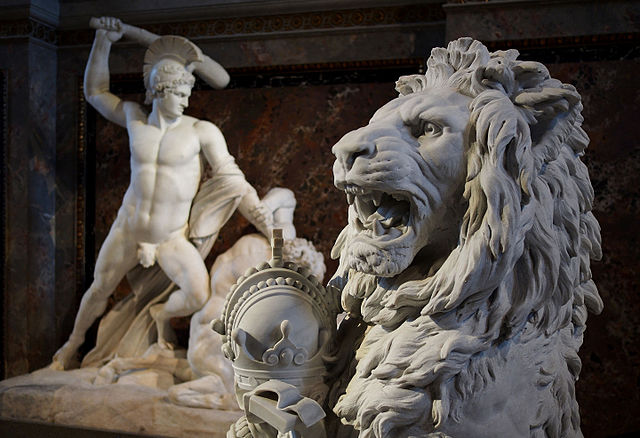Talk about greatness after you watch The Great Museum, a documentary about The Kunsthistorisches Museum in Vienna:
The museum was the creation of Emperor Franz Joseph I of Austria-Hungary. Opened in 1891, the museum (a combination of two) holds the Habsburgs’ formidable art collection and makes many of the effects of the Holy Roman Emperor accessible to the general public. As much as the Protestant and republican in me wonders about that kind of wealth, concentration of power, and even accumulation of relics, it doesn’t take a high school diploma to understand that The Great Museum should be on my bucket list and should likely have been higher than the Louvre or London’s National Gallery. Say what you will about the Habsburgs, they acquired lots of stuff that people interested in history and art want to see.
(Although, I could not fight the impression that the art world, even as accessible as it is now compared to when it fenced in for only the aristocracy and friends to enjoy, has become one big commodity to be bought and sold. The documentary has one auction scene that took the missus and me back to The Red Violin, arguably the best historical treatment on film of the changing value of a musical instrument. Let’s just say, moderns know monetary value better than artistic achievement. I’ll confirm that by noticing that even though the Republic of Austria subsidizes the Great Museum with significant Euro’s, admission in 2013 to the Great Museum was almost 34 Euros — $37. Ouch!)
Meanwhile, back in the greatest nation on God’s green earth, the feds debate whether to cut funding for the National Endowment for the Arts. Stephen Limbaugh keeps it real when he warns about the NEA’s ideological outlook:
Be it the misuse of funds, waste, or deleterious governing philosophy, the National Endowment for the Arts has proven to be a recidivistic cultural butcher.
The NEA’s process for cultivating art is informed by standards set by universities and critical theorists. Those standards of what qualify as “acceptable” contemporary art seem to be any phenomena that offends an individual’s inherent aesthetic disposition. Preferential treatment is given to those works that 1) are able to evoke the most unpleasant reaction and 2) are created with the least amount of discernible purpose. This destructive artistic praxis is thoroughly documented, and there are few examples of NEA-backed art that does not adhere to it.
Be that as it may, so what? Even if the NEA retains their funding, will the artists they subsidize produce anything that will command attention in three centuries? Anything like Peter Brueghel’s Tower of Babel (the film’s closing image)? Can a top hat worn by President Wilson really compare with the Bratina of King Ladislaus IV of Poland?


In this day and age, if the government has to subsidize the “art,” it probably isn’t worth the effort used to make it.
LikeLike
Another film that makes me want to see Austrian royal treasures is Amadeus. Seriously the wallpaper is like the best part of that movie.
LikeLike
“Immersion” (aka., Piss Christ) and the Mapplethorpe exhibit are sure to be hits with future generations. At least that’s what the NEA was thinking when they funded them.
LikeLike
The Architecture of Frank Lloyd Write, the musical scores of John Williams and Aaron Copeland, sculptures of Gutzon and Lincoln Borglum (Mt. Rushmore), the paintings of John Trumball (Revolutionary War era), Grant Wood (American Gothic) and Pablo Picasso, the dance of Martha Graham, scores of talented actors and directors from Hollywood and I would be remiss if I did not mention Johnathan Ive, the designer of all things Apple Inc. since the i-Mac in 1998.
LikeLike
Picasso is now considered an American artist?
I remember when Yehudi Menuhin died and our public radio burst in to tell us Canada’s own YM died today. Shocking on many counts.
LikeLiked by 1 person
Kenton:
My mistake, Picasso was French!
LikeLike
Don’t forget their museums:
LikeLike